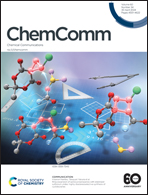Exploiting halide perovskites for heavy metal ion detection
Abstract
Heavy metal ions such as mercury (Hg), copper (Cu), and cadmium (Cd) pose significant threats to ecosystems and human health due to their toxicity and bioaccumulation potential. With growing environmental concerns over heavy metal ion pollution, there is an urgent need to develop efficient detection methods for safeguarding public health and the environment. Various materials, including polymers, nanomaterials, and porous substances, have been used for heavy metal ion detection and have shown promising performance for different scenarios. However, each of these materials has certain limitations as probes. Metal halide perovskites (MHPs), known for their exceptional optoelectronic properties and high structural and chemical tunability, have gained great attention in applications such as photovoltaics and LEDs. Yet, their potential as metal ion probes remains rarely explored. This review assesses MHPs as prospective materials for heavy metal ion detection, taking their structure, chemical properties, and responses to external stimuli into consideration. Three key detection mechanisms—cation exchange (CE), electron transfer (ET), and fluorescence resonance energy transfer (FRET), are explored to understand how metal ions trigger fluorescence changes on perovskites, enabling their detection. Finally, current avenues of developing perovskite probes are discussed, which include exploration of lead-free perovskites to mitigate environmental concerns arising from lead leakage and the pursuit of achieving high-sensitivity and stable detection in aqueous media, summarizing the existing and promising strategies in this field.



 Please wait while we load your content...
Please wait while we load your content...